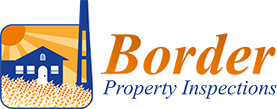THINKING OF HEATING YOUR HOME WITH WOOD. Good choice but make sure you get all the details and make sure the fireplace or wood stove is safe to use.
The subject of wood heat is vast and cannot be effectively dealt with in one issue but I will try to touch on as many aspects of wood heating as possible. First of all lets look at what you are likely to find in most homes today. If the home was built prior to 1970 it most likely will have a full masonry fireplace. That is, a concrete base with a block style chimney lined with clay tiles and an open faced firebox for building the fire. Factory built fireplaces or zero clearance fireplaces seemed to come on strong during the decades of the 70’s -90’s. These units were the first units to be lab tested and certified and most will have a label signifying just that. Due to the inefficiencies of these units the widespread use of sealed fireplace units and freestanding air tight wood stoves became more popular in the 90’s until present day. EPA began measuring and testing wood burning appliances and making the units more efficient in terms of heat recovery and reductions in pollutants. (See video at http://www.borderhi.com/wett-inspections/)
So there you have it in a nut shell, the three stages (as I see it) of the evolution of wood heating your home. Now lets look at the strengths of each. The masonry fireplaces were expensive and time consuming but worked well to heat a room or two and if used consistently they would provide some offset to the home heating costs. The factory built fireplace was introduced as a cost effective means of heating with wood as they were so much quicker and easier to install. The drawbacks to the factory built fireplace was that they were actually negatively efficient. That is to say that more heat ended up going up the chimney then what was produced by the fireplace. So in essence you ended up with a higher fuel heating bill with the fireplace then without. There were a few exceptions but they were few and far between. Finally the sealed wood stoves and factory built fireplaces were introduced that actually worked. Most of these units today are between 60 and 80% efficient and the amount of smoke sent up the chimney is reduced drastically.
If you are buying a home with a wood burning fireplace or wood stove be sure to have the system evaluated by a WETT inspector. If you plan to install your own wood stove, fireplace or pellet stove be sure to consult a WETT Technician such as myself to help you install it correctly. I have installed well over 300 such units and have a vast knowledge as well as the certification to help you get it right. If you go it alone that’s fine but make sure to get it right or your insurance company will most likely make you remove or repair it. Finally be sure to install the proper chimney for use with your stove or fireplace. The manufacturer will require a certain type of chimney and other components to use. If you deviate from the instructions you may need to take it all out and start again, yes I have see this. Over all be safe when it comes to wood heat.

Recent Comments